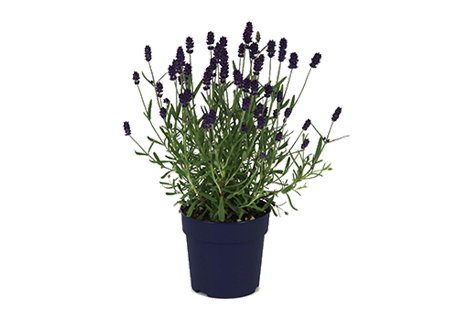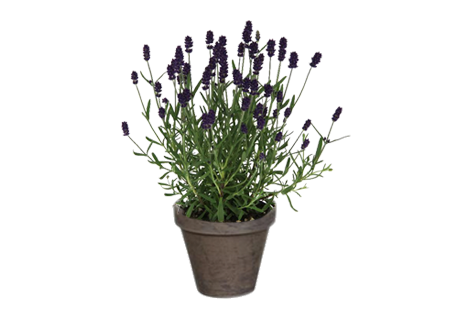Lavandula angustifolia – Felice® series
Lavender (a subshrub with branches that become woody with age) is one of the most popular garden plants in Europe. And for good reason, too, since this plant produces wonderful flowers in the summer and retains its silvery foliage in the winter. Although there are several species of Lavender, only two of them are commonly grown in Europe: Lavandula angustifolia and Lavandula stoechas. The first of these is the most familiar and produces the kinds of flowers you see on plants growing in rows on the rolling hills of southern France. Felice® is an improved series. The period from when the buds display colour until the time the plant actually flowers is longer than other L. angustifolia varieties, so you can enjoy this plant longer. In addition, the flowers of the Felice® series are larger and available in several colours including purple, pink and white.
Care tips
The Felice® series provide beautiful flowers and leaves that are retained during the winter. They can also be used in so many ways. Plant them in the soil along paths and flower beds or display them in pretty coloured pots on the patio or balcony: the choice is yours. And they’re such easy plants. Lavender requires scarcely any maintenance: just sit back and enjoy their masses of lovely, sweetly scented little flowers. This same goes for the plants in the Felice® series, of course, which prefer a sunny open place in your garden. The best time for a modest trim is from June through September. The real pruning should be done in the spring between mid-March and April. This heavier pruning will keep your plant nice and compact (approximately 50 cm tall) so that it will produce lots of young shoots.
Interesting facts
Everyone knows that Lavender has a delightful fragrance. But did you also know that its scientific name, Lavandula, was derived from lavare, which is Latin for ‘to wash’? Back in the days before soap was invented, people washed in water to which they had added Lavender. It not only has a nice scent but also a calming effect. This is also why it is still added to many cosmetic products. Lavender is also useful as a cooking ingredient. An addition of Lavender produces delicious treats ranging from cheese and honey to chocolates, ice cream and biscuits. Tip! Try replacing thyme for Lavender in recipes: delicious!


